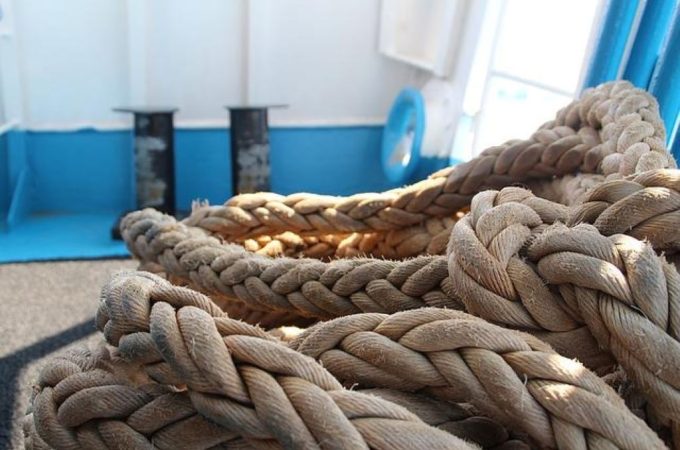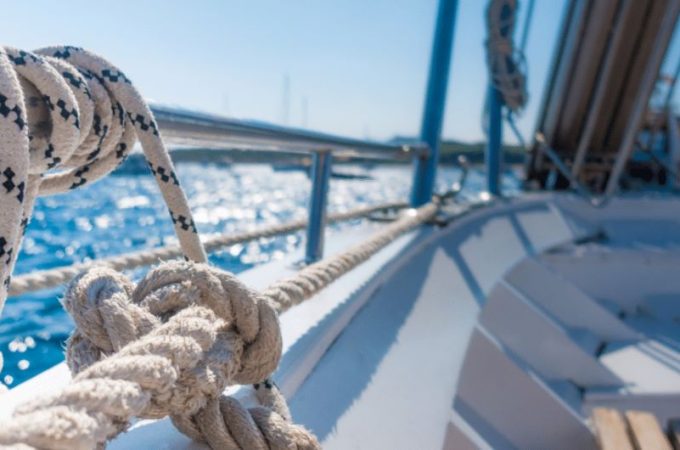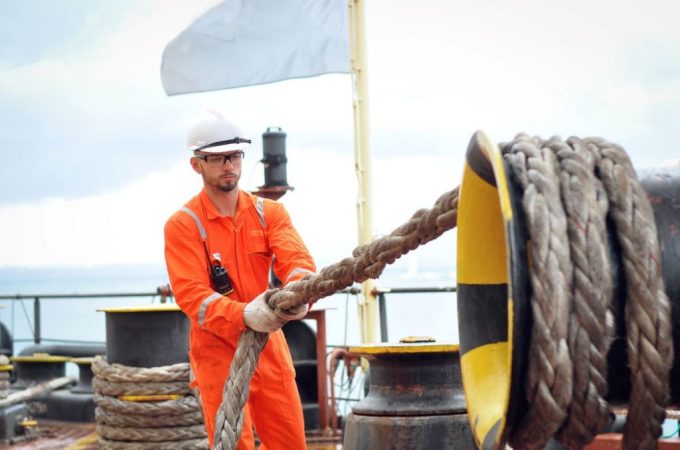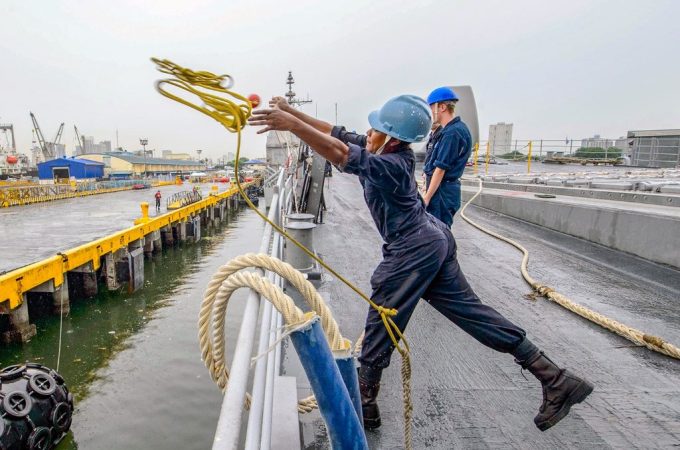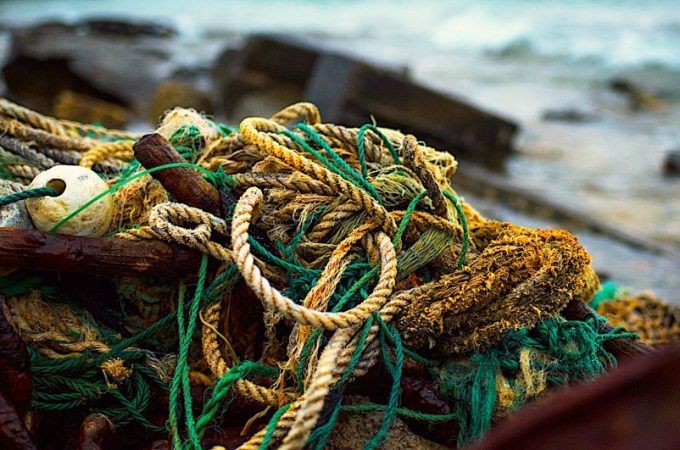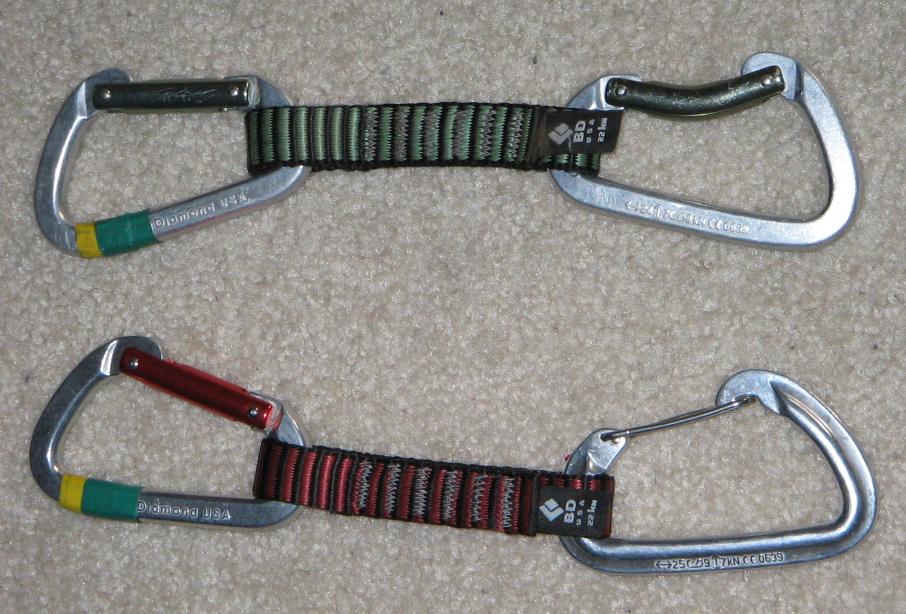
Can You Take Climbing Rope on a Plane: Clearing the Air!
Yes, you can take climbing rope on a plane in both carry-on and checked baggage. Airport security permits it, but check with your airline for any specific restrictions.
Contents at a Glance
ToggleTraveling with climbing gear requires careful planning, especially when it comes to packing essential items like climbing ropes. As a climber, you understand the importance of having your reliable equipment with you, including your rope. Before heading to the airport, always confirm the latest guidelines provided by the Transportation Security Administration (TSA) and your chosen airline, as rules can change.
Knowing these details ensures a smooth check-in process and avoids any last-minute surprises at the security gate. Keep your rope neatly coiled and accessible for inspection, as security officers may need to examine it. By doing so, you’ll be ready to embark on your next climbing adventure as soon as you land, with your trusted rope by your side. Remember, being prepared and informed is key to a hassle-free journey with your climbing gear.

Credit: aplustree.com
Air Travel With Climbing Gear
Embarking on a climbing adventure often requires bringing along specialized gear. One common concern among climbers is whether they can take their climbing ropes and equipment on a plane. Navigating airport security and airline regulations can be tricky. Understanding the rules for air travel with climbing gear is essential for a smooth journey.
Tsa Regulations On Climbing Equipment
The Transportation Security Administration (TSA) sets the standards for what is permissible in carry-on and checked luggage. Generally, climbing ropes and equipment are allowed, but there are guidelines that must be followed.
- Climbing ropes are typically permitted in both carry-on and checked bags.
- Sharp objects, such as ice axes and crampons, must be checked.
- Small tools must be shorter than 7 inches if placed in carry-on.
It’s always best to check the latest TSA guidelines before your trip to ensure compliance and avoid any surprises at the security checkpoint.
Airlines’ Policies On Sports Equipment
While the TSA provides general guidelines, individual airlines have specific policies for sports equipment. These policies often include information on additional fees, packing requirements, and weight restrictions.
| Airline | Policy | Additional Fees |
|---|---|---|
| Delta | Allows climbing equipment as checked luggage. | Standard checked baggage fees apply. |
| American Airlines | Climbing gear allowed; sharp objects must be sheathed. | Standard fees, but oversized charges may apply. |
| United Airlines | Accepts climbing equipment; certain items may be restricted. | Checked baggage fees, with possible oversized or overweight charges. |
Contacting your airline prior to your flight is a smart move. It ensures that your climbing gear complies with their specific rules and reduces the chance of additional fees or the need to repack at the airport.
Climbing Rope Specifics
Traveling with climbing equipment requires planning. Climbing ropes, crucial for safety, have specifications to consider before flying. Understanding these will ensure a smooth journey.
Rope Length and Packing TipsRope Length And Packing Tips
Rope length affects packing. Shorter ropes fit easier in luggage. Longer ropes need more space and may require special packing strategies.
- Coil your rope neatly to save space.
- Use a rope bag to keep it compact and clean.
- Check airline restrictions for carry-on and checked baggage sizes.
Consider a foldable duffel bag for extra space when needed.
Material and Security ConcernsMaterial And Security Concerns
Climbing ropes are made of strong synthetic fibers. These materials are generally safe to fly with.
Security personnel may inspect climbing equipment. Be prepared to unpack and explain your gear.
- Keep ropes accessible in your luggage for inspections.
- Include a note explaining the rope’s purpose.
- Check the Transportation Security Administration (TSA) guidelines for the latest information.
Pack smart and fly confidently with your climbing rope.
Packing Climbing Rope
Packing Climbing Rope for your next adventure doesn’t have to be a hassle. Whether you’re flying to a far-off mountain range or a local crag, knowing how to properly pack your climbing rope can make your travel experience smoother. Let’s explore how to pack your rope efficiently to ensure it arrives in top condition, ready for your climb.
Best Practices For Packing Ropes
Keeping your climbing rope safe is crucial. Follow these best practices:
- Use a rope bag to protect your rope from dirt and damage.
- Coil the rope neatly before placing it in the bag to prevent tangles.
- Keep it dry by storing it in a waterproof compartment or bag.
- Avoid sharp objects that can cut or fray the rope.
Cabin Vs. Checked Luggage
Deciding whether to carry your rope in cabin or checked luggage is important.
| Cabin Luggage | Checked Luggage |
|---|---|
|
|
Check airline policies before deciding. Some airlines have specific rules for climbing gear. Pack your rope in checked luggage if it’s heavy or bulky. This saves cabin space and makes your journey more comfortable.
Safety Checks And Precautions
Safety Checks and Precautions are vital when traveling with climbing gear. Airlines and security personnel need to ensure safety for all passengers. This section helps you navigate through security with your climbing rope smoothly.
Security Screening Procedures
Understanding security screening procedures is crucial. Here are key points:
- Show your climbing rope to security officers.
- Explain its purpose and usage briefly.
- Be ready to unpack the rope if requested.
Security might use an X-ray machine to check your rope. This process is safe for your equipment.
Handling Spot Checks And Questions
Spot checks are random but standard. Here’s how to handle them:
- Stay calm and polite during the process.
- Answer all questions about your climbing rope clearly.
- Keep documentation handy, like receipts or a climbing permit.
Being prepared can make this process faster and easier for everyone involved.
International Travel Considerations
Traveling with climbing gear requires extra planning. When your adventures take you across borders, understanding the rules for international travel is crucial. Whether you’re jetting off to the Alps or exploring crags in Southeast Asia, knowing how to pack your climbing rope can save you time and stress. Let’s dive into the key considerations for globetrotting climbers.
Customs And Import Regulations
Each country sets its own rules about what you can bring in. Before you fly, check the customs and import regulations for your destination. Some countries may have restrictions on outdoor gear due to environmental concerns or trade laws.
- Research the destination’s customs rules online.
- Prepare for possible inspections of your gear.
- Carry receipts to show the age and value of your rope.
For instance, New Zealand has strict biosecurity laws to protect its unique ecosystem. Any soil or biological material on outdoor equipment can cause issues. Therefore, ensure your climbing rope is clean and free from such contaminants before packing.
Cross-cultural Airport Experiences
Airports around the world vary in their security processes. Understanding these differences can help make your travel smoother. Here’s what to expect:
| Region | Security Screening | Tips |
|---|---|---|
| Europe | May require rope out for inspection | Pack rope on top for easy access |
| Asia | Security may ask about climbing equipment | Have a climbing guidebook ready to explain |
| Americas | Generally familiar with climbing gear | Keep gear organized for quick explanation |
Remember, airport staff in some regions might not be familiar with climbing gear. A friendly explanation can go a long way. Be prepared to unpack and show your rope if asked. Keep your language simple and clear. This can help speed up the screening process.

Credit: www.amazon.com
Tips From Seasoned Climbers
Bringing a climbing rope on a plane can seem tricky. Seasoned climbers have honed the art of packing smart. They offer invaluable advice to make your travel smooth and hassle-free.
Advice On Travel-friendly Gear
Select lightweight and compact gear whenever possible. This makes packing and carrying your equipment a breeze. Look for foldable harnesses and compact belay devices. These items save space and weight in your luggage.
Consider using a rope bag that doubles as a travel bag. It keeps your rope tidy and protects it during transit. Climbers also suggest carabiners for attaching gear to your backpack. This frees up space inside for other essentials.
Check airline weight limits before you fly. Make sure your climbing gear fits within these restrictions. This avoids extra fees at the airport. Use a luggage scale at home to weigh your gear.
Sharing Personal Experiences
Many climbers share stories of traveling with ropes. Their experiences can guide you through airport security with ease.
- Communicate with security staff. Explain what climbing rope is and why it’s in your bag.
- Arrive early at the airport. Security might need extra time to check your climbing equipment.
- Keep your gear clean. A dirty rope can raise concerns with security. A clean rope passes through without issues.
- Use a clear plastic bag for small climbing items. This lets security see what’s inside quickly.
By following these tips, climbers ensure a smooth journey. They arrive ready for their next climbing adventure.
Alternatives To Flying With Rope
Traveling with climbing rope can be cumbersome. Fortunately, there are alternatives that can make your trip smoother and possibly even save some space in your luggage.
Renting Vs. Bringing Climbing Gear
Renting climbing gear at your destination has benefits:
- Less luggage to carry
- No need to worry about airline baggage fees
- Try different gear types and brands
Yet, bringing your own gear ensures:
- Familiarity with your equipment
- Guaranteed availability and fit
- Potential cost savings over multiple trips
Consider both options based on your needs, budget, and trip duration.
Shipping Climbing Equipment Ahead
Sending your climbing gear to your destination beforehand is another strategy.
- Check with your accommodation for receiving packages.
- Use a reliable shipping service with tracking.
- Ensure your gear arrives before you do.
This method can reduce travel stress and luggage.
Both renting and shipping offer practical solutions for climbers. Choose based on convenience, cost, and personal preference.
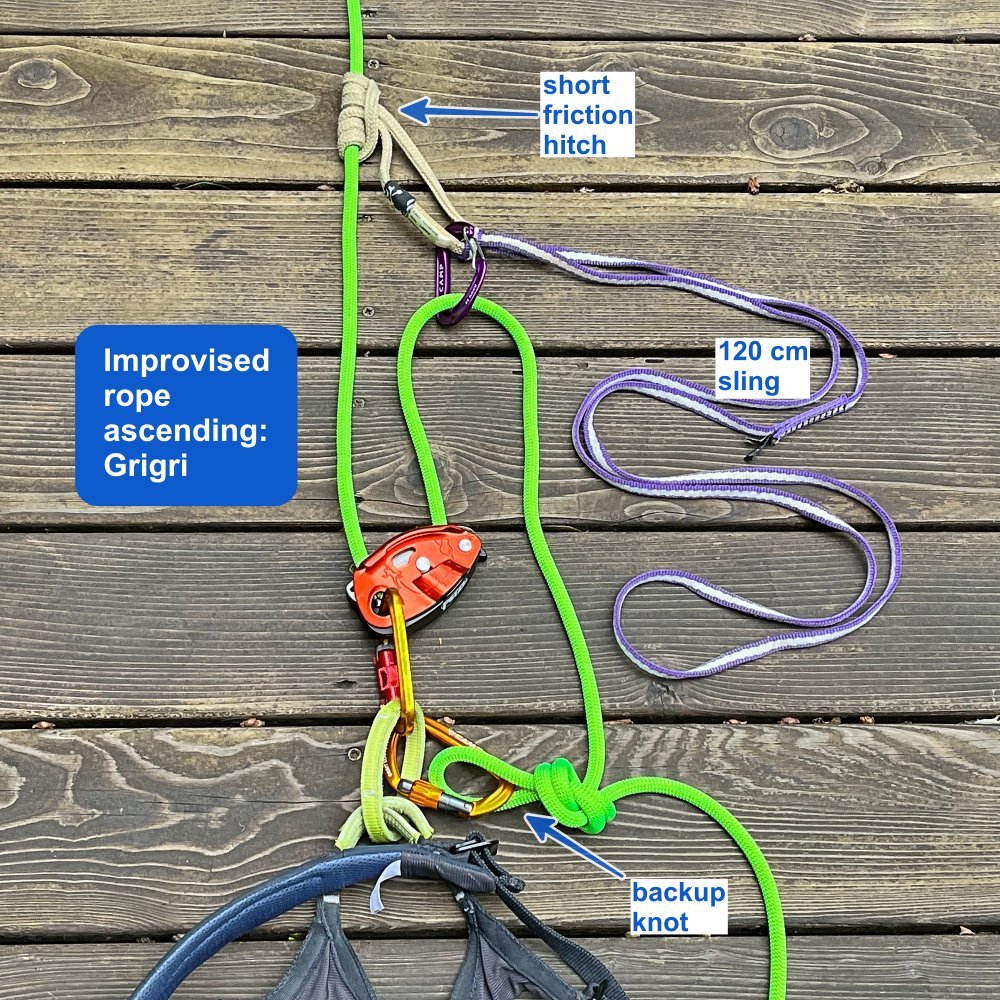
Credit: www.alpinesavvy.com
Preparation Before The Flight
Traveling with climbing gear requires smart planning. Ensure a hassle-free journey by checking airline policies in advance. Climbing ropes are generally allowed, but size and weight limits apply. Always confirm with the airline to avoid surprises at the airport.
Checklist For Climbing Gear
Stay organized with a climbing gear checklist. This ensures nothing gets left behind. Here’s what to include:
- Carabiners: Count and inspect each one.
- Harness: Check for wear and tear.
- Climbing shoes: Pack them in breathable bags.
- Rope: Coil neatly and secure with bands.
- Helmet: Protect it with padding.
- Belay device: Keep it accessible.
- Chalk bag: Empty it to prevent mess.
Last-minute Packing Tips
Time is precious before a flight. Follow these last-minute tips:
- Double-check your list: Ensure all gear is packed.
- Use luggage space wisely: Distribute weight evenly.
- Protect fragile items: Use clothes for padding.
- Keep essentials handy: Have documents and snacks within reach.
Label your bag: Include contact info and a distinct marker.
Frequently Asked Questions
Can You Take Climbing Rope Through Tsa?
Yes, you can take a climbing rope through TSA. It’s advisable to pack it in your checked luggage to avoid issues during security screening. Always check the latest TSA guidelines before traveling.
Does Tsa Allow Jump Ropes?
Yes, TSA permits travelers to bring jump ropes in both carry-on and checked luggage. Always check the latest TSA guidelines before flying.
Can You Bring Climbing Equipment On A Plane?
Yes, you can bring climbing equipment on a plane, but it must comply with airline regulations. Check your gear as luggage and ensure sharp objects are well-protected to prevent injury to baggage handlers and inspectors. Always verify specific airline rules before traveling.
Can You Fly With A Climbing Harness?
Yes, you can fly with a climbing harness in your checked luggage or carry-on. Ensure it complies with airline size and weight restrictions. Always check with the specific airline’s policy before traveling.
Conclusion
Traveling with climbing gear requires a bit of planning. You can indeed bring a climbing rope on a plane, but always check the airline’s baggage policy first. Packing it securely and keeping it accessible for inspections will help streamline your experience.
Safe travels on your next climbing adventure!

